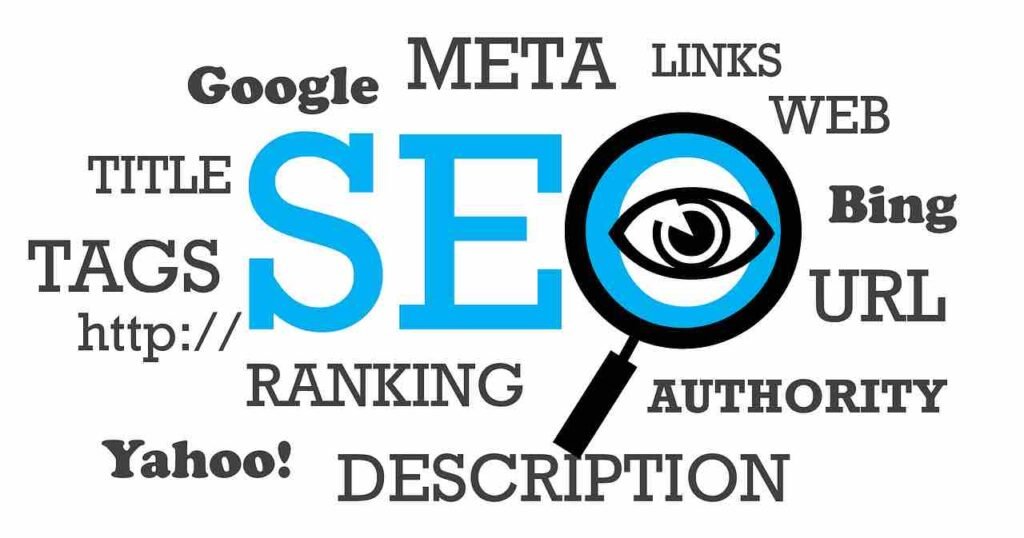Table of Contents
Introduction: Unlocking the Essence of Informational Intent: Why It Matters for SEO Success
Informational intent is when the user wants to learn something, find an answer to a question, or find a solution to a problem but does not have an immediate transactional intent.
These searches tend to contain words such as “how to,” “what is,” or “guide to,” indicating an interest in education more than purchasing.
From an SEO standpoint, knowing about informational intent is crucial since it generates much organic traffic. By adequately addressing users’ queries, businesses can build authority, improve rankings, and create avenues for future conversions.
Building trust and loyalty is essential, and addressing user requirements at the research stage is imperative in meeting user needs. Users who encounter valuable, accurate, and relevant answers to their queries are likelier to engage with a brand. This is a crucial phase in the buyer’s journey that sets the stage for deeper engagement and eventual conversion.
Creating content that satisfies informational intent means searchers spend longer on your site and may even come back for more, which directs positive signals to metrics such as bounce rate and dwell time.
In this seven-step guide, we’ll share how to skip the fluff and get to the specifics of writing high-quality articles, finding the right potential keywords, and using SEO tools to optimize your content for informational queries.
These strategies help improve your search engine rankings and establish your brand as a trusted resource among your audience. So, let’s get into the concrete steps to help you master the informational search intent.
1. Understanding Informational Intent
What is Informational Intent?

Information intent refers to users who perform a search to learn or find information, explanations, or help without immediately looking to purchase or visit a particular site.
Keywords like “how to plant a garden,” “what is SEO?” and “guide to reducing stress” indicate informational intent.
These users are focused on the research phase of their search intent, which is to discover or find a solution to a particular problem.
A website that satisfies navigational intent is for a user looking for a specific website, and a transactional intent website is for a user who is ready to buy; however, an informational intent website or post or content is entirely knowledge-based content or post or website explicitly targeting users who are at the information-seeking and gathering stage of their buyer journey. It is intended to answer questions or bring clarity to a topic.
Search engines favor informational content since this aligns with their goal of providing users with value.
For example, Google’s algorithms reward pages with high-quality, thorough, and user-focused content by ranking them higher in search result pages (SERPs).
By understanding and targeting informational intent, businesses can effectively capture this traffic and build website authority in their respective niches.
The Role of Informational Intent in the Buyer’s Journey (Conversion Funnel)
In the awareness stage of the buyer’s journey, informational intent is paramount. Users recognize their needs or problems at this stage and search for solutions online.

Someone searching for “how to fix a leaky faucet,” for example, may not be ready to hire a plumber but is collecting information to guide his or her next move.
Trust and authority are built effectively when you address informational intent correctly. When users discover you offer helpful, reliable, and all-inclusive content, they are more likely to return to your content when considering their options, recommend your content to others, or transition to the decision stage of the buyer journey.
You connect with your target audience here, and if you meet their informational needs, this can lead to a long-term relationship.
Information-seeking user queries would include, for example, “Steps to improve the speed of a new website,” “Benefits of organic gardening,” and “What is blockchain technology?” In addition to meeting user needs, targeted content for these queries helps establish your brand as an industry expert.
Identifying Informational Intent in Search Queries
Detecting this type of intent starts with picking out keywords that indicate curiosity and a desire for information.
Typical examples include the following: “how to,” “why does,” “best ways to,” “what is,” and “guide to.” These keywords demonstrate the user’s educational or informational content needs.
Search behavior and question-based queries contribute a lot to user intent. For instance, searches that include “learn” or “benefits” are queries about things searchers want to understand better. Study these query patterns to develop content according to searchers’ expectations seeking information or knowledge.
Informational intent can be identified with tools like Google Search Console, Ahrefs, and SEMrush.
These tools also provide in-depth data about keyword trends, user queries, and search volumes so you can prioritize high-value topics. You use these signals to help create content that meets informational intent, delivers traffic to your website, and improves search engine rankings.
2. Conducting Keyword Research for Informational Intent
Finding Low-Competition Informational Keywords
When optimizing for informational intent, target high volume + lower difficulty keywords.
By targeting these keywords, the competition is significantly reduced, enabling higher chances for Google rankings and, in the process, attracting a large audience to your content. By zeroing in on such terms, you can establish your content as a valuable resource for users at the research phase.
Keyword research tools such as Ahrefs, SEMrush, and Answer the Public are invaluable for finding these opportunities.
Tools like Ahrefs and SEMrush offer insights into search volume, keyword difficulty, and related terms, while Answer the Public helps find question-based queries that match informational intent.
For instance, search queries like “how to create a content calendar,” “meditation benefits,” and “how to start a blog” target informational intent. This is because such searches indicate user curiosity, which can be strategically harnessed through content to drive traffic, establish authority, and lead readers to click through to your other pages.
Analyzing Competitor Content for Gaps
For informational intent, competitor analysis is a strong approach to leveraging content opportunities.
Begin exploring what your competitors within your niche currently rank for, especially for high-traffic keywords.
Tools like SEMrush and Ahrefs let you reverse engineer competitor content and show which queries drive the most organic traffic to your competitor’s websites.
Identify gaps in their content—places where they don’t provide thorough answers to user questions or, more likely, don’t cover these topics.
For example, a competitor may rank for “how to start a podcast” but miss details around “picking podcast equipment” or “beginner software for editing.” These gaps allow you to produce more comprehensive high-value content that better matches user needs.
By filling in the gaps and improving existing competitor content, you can outrank your competitors in search. For instance, embedding images or videos, providing tutorials or steps, and engaging experts in the field can help you enhance the value of your content.
Recognizing and filling these gaps guarantees that your content remains distinctive and fulfills informational intent more thoroughly.
Balancing Relevance and Search Volume
The goal of informational intent keyword research is to find a balance between relevance and search volume.
Keywords need to be relevant and resonate with your target audience. They should also have enough search traffic to warrant creating content around them.
General categories like “content marketing strategies” have a lot of people interested in them, but they can be highly competitive.
Meanwhile, a keyword that is very specific in a niche, such as “how to use infographics in content marketing,” will have less search volume but be way more relevant to the targeted audience.
To find the sweet spot, focus on high-volume keywords closely aligned with your audience’s interests and identify niche terms that address their pain points.
For instance, a content piece that focuses on a broad keyword like “SEO basics” as well as a niche keyword like “SEO tips for small businesses” can be merged and refined to create a piece of informational content that will appeal to the general audience readers as well as to a specialized audience. This strategy ensures that your content is relevant and competitive.
3. Crafting High-Quality Informational Content
Writing Engaging, In-Depth Content
Unsurprisingly, you want deep and engaging content when the intent is informational.
For informational queries like “how to make a website faster” or “digital marketing guide,” users want thorough and detailed responses that thoroughly answer their questions.
Long-form content (typically anything over 1,000 words) works particularly well. It allows you to explore topics in-depth, provide value, and encourage users to spend more time on your page.
Good structuring of content is essential for content readability and engagement. Use headings, subheadings, and bulleted lists to break up large amounts of text, making information easier to digest.
This organization optimizes the user experience and aligns with Google’s preference for well-organized content, giving you a better opportunity to rank higher in the SERPs.
So if you were writing a post on “steps to start a blog,” you could break the content down into sections like “choosing a platform”, “designing your site”, and “creating engaging content.”
Including real-life examples and action-based tips shows that you are an expert and will keep readers engaged. Producing long-form, structured, and highly informative content aligns with users’ needs with informational intent, encouraging traffic and credibility building.
Adding Value with Visuals and Multimedia Elements
Informational content can be highly enhanced with visuals and multimedia elements.
Incorporating infographics, videos, and visual images simplifies complex ideas and retains user interest. For example, an infographic summarizing the benefits of email marketing or a video tutorial showing how to set up a WordPress site step-by-step can make things easier to grasp and ensure the users keep watching.
Using tools like Canva, Loom, and Adobe Spark, you can create visually pleasing multimedia elements for your text.
Canva, for instance, enables users to create tailored infographics and images, and Loom allows users to make quick, professional-looking video tutorials. You do not need design skills to use these tools; they help you incorporate visuals in your content creation flow.
Let’s say you’re publishing an article titled “SEO strategies for small businesses.” You could insert a flowchart that illustrates the steps for keyword research or add a quick video that explains on-page SEO techniques.
Visuals promote user experience and content shareability, which helps SEO traffic and backlinks. Including multimedia elements provides extra value to users who search with informational intent.
Ensuring Accuracy and Authority
Crafting content for informational intent requires no leeway. Users rely on accurate information, and failing to provide it can lead to a lack of trust and legitimacy.
Refer to reliable sources (academic articles, industry reports, official web pages, etc.) to ensure the information you supply is always correct.
Citing authoritative sites also builds relevance with search engines, increasing your chances of climbing in SERP rankings.
Another critical component of accuracy is fact-checking.
Update your content regularly to reflect the most recent data and trends, especially in rapidly evolving industries like technology or healthcare.
If, for example, your post is about “top SEO tools,” make sure that your list contains modern tools, replacing obsolete tools and methods.
It also positions you as knowledgeable and trustworthy by providing accurate, well-sourced information to your audience. However, when content is credible, users are motivated to visit your site again, share your articles, and treat you as a specific source for answers, reinforcing your SEO credentials.
4. Optimizing for Search Engines and Users
Using On-Page SEO Techniques

Strong on-page SEO practices help optimize informational intent.
Creating concise and engaging titles, meta descriptions, and headers is crucial because they let search engines know what your page is about and entice users to click.
For example, the title “What Is Informational Intent? A Complete Guide” clearly tells both users and search engines what the content is about.
A good meta description should encapsulate the article while including the focus keyword that can naturally attract searchers to click on your content.
Finally, using keywords naturally throughout the paragraph should be SEO-optimized without affecting readability. Do not force keywords throughout your content, which can repel readers and lower rankings.
Keyword stuffing affects readability. Instead, place keywords strategically so they flow naturally from sentence to sentence and paragraph to paragraph. For instance, place strategic or primary keywords like “informational intent” in the title, introduction, headers, body content, and conclusion.
Evaluate On-Page SEO using tools like Yoast SEO, RankMath, SEMrush, and Google Search Console. These tools offer insights into keyword utilization, content readability, and technical enhancements, ensuring that your content meets search engine criteria and addresses user intent.
Creating User-Friendly Content Structures
A convenient content structure for users can accommodate query formats and is essential in satisfying informational intent. Yes, if everything is readable with scannable formats, users will quickly get the required information, which can result in decreased bounce rates and increased engagement rates.
Use headings and subheadings to chunk content and guide your readers through your topic.
Use bullet points, short paragraphs, and a healthy white space to improve readability. So, for example, if you’re defining a process as keyword research, use a bulleted list to break down complex information. These short paragraphs mean the text is not daunting, while the white space gives it a clean, professional appearance.
You could also use a how-to guide layout, which usually has step-by-step instructions and visuals, or an FAQ-style layout with expandable and collapsible information sections.
These structures focus on user experience while playing nicely with search engines, keeping your content SEO-optimized and reader-friendly.
Leveraging Internal and External Linking
Linking is a very effective tactic for optimizing informational intent.
Internal links direct users to related content within your site, allowing them to spend more time on your website and increasing engagement rates. For instance, if you have a blog post titled: “keyword research tips,” you might link it to another blog post about “SEO tools,” and the user will experience a smooth internal transition from one page to another.
Links to outside material of authority help gain trust and help you build credibility with search engines. Citing a Google guide on SEO, for example, will help support your content while exhibiting your expert knowledge.
5. Promoting Informational Content
Sharing on Social Media Platforms
One of the best methods for increasing the reach and visibility of informational content on social media channels is promoting it.
One best practice is to customize your content for each platform’s audience.
For example, Twitter is powerful for short tips,
LinkedIn for professional guides.
Instagram for visuals prompting your post.
For content about informational intent, use headlines like “Discover Top ranking secrets on Google! This guide to making the most of informational intent.”
Add relevant hashtags such as #SEOtips, #ContentStrategy, and #InformationalIntent to increase discoverability.
Hootsuite or Buffer streamline scheduling and tracking. Those platforms also let you publish consistently and track performance metrics like reach, clicks, and engagement rates.
Make these numbers work for you by fine-tuning your strategy: make sure the informational part of your content works for social media to extend greater reach and help you connect with your audience on all levels.
Building Backlinks for Informational Content
Links are still a pillar of SEO, especially for informational content.
They indicate to search engines that your content is legitimate and trustworthy, boosting rankings for queries of informational intent.
Your strategy should involve outreach techniques such as pitching content to industry blogs or working with influencers to obtain quality backlinks.
For example, if your post centers on keyword research, connect with SEO blogs that share tips or guest posts with links to your content.
Another powerful strategy is collaboration.
Team up with niche websites or experts for webinars, podcasts, or jointly written articles that organically backlink to your content.
Ahrefs or Moz are great for finding and tracking backlinks opportunities. An effective backlink strategy is continuous but pays off when making your content visible.
Encouraging User Engagement and Feedback
Encouraging user interaction and feedback is a great way to enhance your content and further extend its reach.
Incorporating a comment section invites your readers to discuss or inquire, thus making your post quite engaging and helpful!
For instance, you might ask, “What is your biggest challenge with targeting informational intent? Share below!”
Fill your community with polls, quizzes, or questions about the subject, such as, “What type of content do you find the most helpful: guides or tutorials?”
Finally, listening to and responding quickly to feedback shows you value your users’ input. This interaction builds trust and enables you to refine your content through real-world insights.
6. Measuring Success and Iterating Your Strategy
Tracking Metrics That Matter
Monitoring the right metrics is key to ensuring your informational intent optimization efforts do their job.
Examples of KPIs for monitoring success include the following: organic traffic, bounce rate, time on page, and click-through rates (CTR).
The traffic shows how well your content converts search engine users, and the bounce rate and time on the page measure user engagement. A high CTR means your meta titles and descriptions are attractive to the user.
These metrics can be gleaned from sources such as Google Analytics.
For example, the Behavior Flow Report tracks user behavior on your site so you can identify areas for improvement. This includes using tools such as SEMrush to show specific keywords related to informational intent performance.
For example, success metrics for informational content often include page views, time on the page, and backlinks from other websites. Tracking these indicators enables you to assess how your strategies work, which may inform your next steps in polishing your content.
Updating Content to Stay Relevant
To sustain its relevance in search results, informational intent must stay current. Regularly updating content with the latest statistics, fresh perspectives, or revised examples conveys to search engines and users that your content remains relevant.
Google Trends, Ahrefs, and similar tools can help you determine whether there are keyword trends that you are missing out on based on your current performance.
Take, for example, a blog post titled “What is informational intent?” How can it be updated with new strategies or connected to other topics that match and align with user queries?
To update the content, improve, replace, or update the visuals you use, refine the written content, examine the format, and optimize for new keywords.
Regularly returning to your earlier blog post about informational content increases the likelihood that it and user needs will remain at the top of your mind while increasing your chance of optimizing SERP.
Learning from Competitor Success
Competitor analysis is an extremely useful way of honing your informational content strategy.
Analyze your competitors’ well-ranked posts to learn what works for them (perhaps their format, tone, or multimedia elements).
Take the tips utilized in your content to another level with the content. For instance, if a competing guide scores high on SERP thanks to a well-thought-out infographic design, you should counter by making a visually engaging version of your own.
Tools like BuzzSumo or Ahrefs allow you to analyze the best-performing content for competitors and their backlink profiles, giving you ideas for where to improve.
Understanding what your competitors are up to lets you keep your content relevant and aligned with the latest user habits.
Conclusion
Crafting informational intent content not only meets search engine demands but also forges more profound relationships with your audience.
By knowing what your users are searching for in the research stage and offering a thorough and engaging answer, you earn their trust and are regarded as having credibility. This establishes your brand as a go-to resource and improves the chance of future conversions.
So, what are we waiting for? To get started, conduct an inventory of content you already have that can be optimized for informational intent as an opportunity, and systematize your keyword research process.
Next, plan and organize value-adding content tuned to index user queries and comply with best practices in SEO. As you regularly assess your performance and adjust according to trends, you’ll maximize the power of informational intent, earn the coveted top spots, and ultimately ingrain relationships with your users.
When done right, optimization for informational intent can become the foundation of your entire content strategy, driving sustainable growth and keeping you ahead of the competition.
Please let us know if your response will help us create more valuable content for our mutual benefit.
Please leave your comment below and share what resonated with you or what you want to see next!
We value your inputs and comments as they help us refine our posts.
Thank you.





[…] example, if you want a recipe (informational intent), you could search for “how to bake chocolate chip cookies”—the phrase […]